The concept of a dark ritual has long held a place in human imagination, shrouded in mystery, fear, and fascination. Conjuring images of secret ceremonies, arcane symbols, and forbidden knowledge, dark rituals have become a subject of intrigue and speculation. In this article, we will explore the realm of dark rituals, shedding light on their origins, purposes, and the cautionary tales that surround them.
Origins and Historical Context of The Dark Ritual
Dark rituals, with their intriguing blend of mysticism and ancient practices, find their origins woven deeply into the fabric of human history. These enigmatic ceremonies have left an indelible mark on cultures across the world, transcending time and boundaries. To truly understand the origins and historical context of dark rituals, we must embark on a journey through the ages, uncovering the threads that have shaped these captivating practices.
1. Ancient Beginnings
The roots of dark rituals can be traced back to the earliest civilizations, where rituals held immense significance in bridging the gap between the mundane and the supernatural. Ancient cultures often sought ways to communicate with deities, appease spirits, or harness unseen forces for protection and prosperity. Rituals, both light and dark, were seen as a means of influencing the unpredictable course of life.
In ancient Egypt, for instance, the Book of the Dead documented rituals designed to guide the deceased through the afterlife. These rituals often contained spells and incantations meant to ensure a safe passage and a positive outcome in the realm beyond. Similarly, the Aztecs of Mesoamerica engaged in rituals involving human sacrifice, believing that these acts would appease their gods and maintain the cosmic balance.
2. Medieval Alchemy and the Occult
The medieval period witnessed the rise of alchemy, an intricate blend of science, mysticism, and spiritual aspiration. Alchemists sought to transmute base metals into gold and discover the philosopher’s stone, a substance believed to grant immortality. These pursuits were often intertwined with rituals that were shrouded in secrecy, symbolizing the quest for both material and spiritual transformation.
The occult practices of the Middle Ages further contributed to the tapestry of dark rituals. Secret societies and mystical orders emerged, such as the Knights Templar and the Rosicrucians, each with their own rituals that combined esoteric knowledge and spiritual initiation. These rituals were believed to unlock hidden truths and grant access to higher realms of consciousness.
3. Modern Interpretations
The perception and practice of dark rituals continued to evolve in the modern era. The 19th and 20th centuries saw a resurgence of interest in the occult, spurred on by the works of figures like Aleister Crowley and the founding of organizations like the Hermetic Order of the Golden Dawn. These movements blended ancient symbolism with contemporary interpretations, inspiring a new generation of practitioners.
Moreover, literature and cinema have perpetuated the fascination with dark rituals. Writers like H.P. Lovecraft introduced cosmic horror, where rituals were used to summon ancient and powerful entities. Films like “Rosemary’s Baby” and “The Exorcist” tapped into the fear of the unknown, amplifying the allure of rituals as a gateway to forbidden knowledge and supernatural forces.
4. Cultural Diversity and Global Influence
One remarkable aspect of dark rituals is their universality across cultures. While practices vary significantly, the underlying theme of communing with the unknown remains constant. Indigenous cultures around the world engage in rituals to connect with ancestral spirits, heal the sick, and ensure bountiful harvests. Shamanistic practices often involve altered states of consciousness, dancing, and chanting—all of which can be considered forms of ritual.
In West Africa, the voodoo tradition employs rituals to interact with spirits known as Loa. These rituals are a blend of African, European, and indigenous influences, showcasing the adaptability and resilience of these practices across cultural boundaries.
The origins and historical context of dark rituals reveal a rich tapestry of human experience, woven from threads of spirituality, mystery, and the quest for meaning. From ancient civilizations to the modern world, these rituals have persisted, transformed, and adapted to the changing landscapes of belief and culture. Whether viewed as a means of communication with the divine, a path to self-discovery, or an artistic expression of the unknown, dark rituals continue to captivate our imagination and shed light on the complex relationship between humanity and the unseen realms.
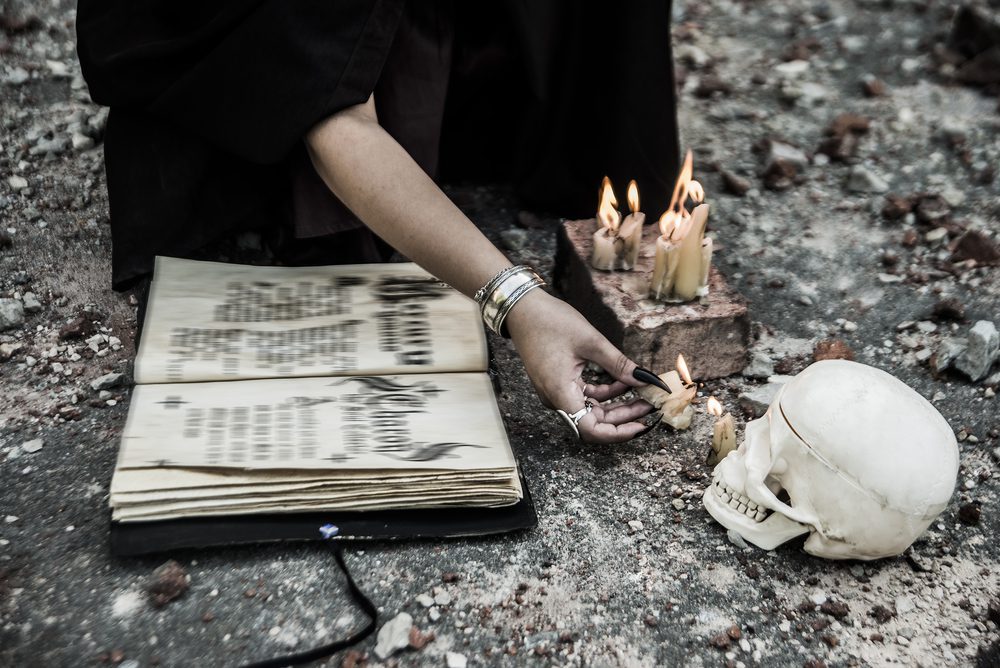

Practices and Elements
Dark rituals, often steeped in symbolism and shrouded in mystery, unfold like esoteric theaters where practitioners and observers alike are drawn into a world that blurs the line between the known and the enigmatic. These ceremonies are defined by a distinct set of practices and elements, each playing a crucial role in creating an atmosphere that resonates with the unseen forces believed to be at play.
- Symbols and Sigils: At the heart of dark rituals lie symbols and sigils—visual representations charged with mystical meanings. These symbols may come from ancient traditions, mythologies, or the personal beliefs of practitioners. Pentagrams, crosses, crescent moons, and spirals are just a few examples of symbols that find their way into dark rituals. Sigils, on the other hand, are unique symbols often created by practitioners to embody their intentions or invoke specific entities. The act of drawing or visualizing these symbols is thought to activate their inherent power.
- Candles and Lighting: Lighting plays a pivotal role in dark rituals, casting an eerie glow that heightens the atmosphere of the ceremony. Candles, with their flickering flames, are a staple in many rituals. Different colors hold distinct symbolic meanings—black for protection and banishing, red for passion and energy, and white for purity and spiritual enlightenment. The interplay of light and shadow creates an environment conducive to focusing the mind and tapping into altered states of consciousness.
- Incantations and Chants: The spoken word holds immense power in dark rituals. Incantations and chants, often spoken in archaic or unfamiliar languages, serve as vehicles for intent and communication with otherworldly entities. The rhythm and cadence of these words are believed to carry vibrations that resonate with the intended purpose of the ritual. Reciting these incantations is more than mere recitation; it’s a means of aligning the practitioner’s thoughts and intentions with the desired outcome.
- Sacred Objects and Tools: Dark rituals are accompanied by an array of sacred objects and tools that lend an air of authenticity and gravity to the proceedings. These can include athames (ritual daggers), chalices, wands, and crystals. Each object is selected for its unique properties and associations, adding layers of symbolism and intention to the ritual. Some practitioners believe that these objects serve as conduits through which energy flows, enhancing the ritual’s efficacy.
- Altars and Offerings: The focal point of a dark ritual is often an altar—a carefully arranged space where the practitioner interacts with the spiritual realm. Altars are adorned with symbols, candles, and relevant objects, creating a concentrated field of energy. Offerings, which can range from herbs and fruits to personal items, are presented to spirits or deities as a gesture of respect and as a way to establish a connection.
- Personalization and Intent: Perhaps the most significant element of a dark ritual is the personalization of the experience. Every practitioner brings their own intentions, beliefs, and energies to the ceremony. The rituals themselves are templates, and it’s the practitioner’s focus, intention, and emotional investment that breathe life into them. This intimate connection between the practitioner and the ritual makes each ceremony a unique journey into the realm of the unknown.
The practices and elements that characterize dark rituals are more than mere theatrics; they are the threads that weave the fabric of belief, intent, and human connection. Through symbols, incantations, and the manipulation of elements, practitioners create a bridge between the material and the ethereal, the known and the unknown. In these ceremonies, the mundane and the mystical intertwine, offering a glimpse into the profound depths of the human psyche and the vast cosmos beyond.
Examples of Dark Rituals
Dark rituals, by their nature, often involve the manipulation of energies, the invocation of supernatural entities, or the pursuit of personal gain at the expense of others. Here are a few examples for illustrative purposes only:
- Blood Pact Ritual:
This ritual involves the creation of a pact or agreement sealed with blood between two or more individuals and a powerful entity or deity. The participants willingly offer their blood as a symbolic bond and commitment to fulfill certain desires or gain supernatural assistance. The ritual is often performed in secluded or sacred spaces and may require specific invocations and offerings. - Necromantic Seance:
A necromantic seance is a ritualistic attempt to communicate with the spirits of the deceased. It typically involves creating a sacred circle or space, lighting candles, and invoking the presence of specific spirits. The practitioner seeks knowledge, guidance, or even the manipulation of the deceased for personal gain. Caution should be exercised, as it is believed to be a dangerous practice that can attract unwanted spiritual entities. - Invocation of Dark Deities:
This ritual involves invoking or summoning dark deities or entities associated with the shadowy aspects of existence. The practitioner may seek to establish a relationship with these entities for personal power, knowledge, or to serve as intermediaries between the human and spirit world. The ritual often includes specific invocations, offerings, and the use of symbols associated with the deity or entity being summoned. - Curse Ritual:
A curse ritual is performed with the intention of causing harm or misfortune to a specific individual or group. It typically involves the use of ritualistic objects, such as personal belongings or symbolic representations of the target, along with specific chants or incantations to direct negative energies towards the intended recipient. Engaging in curse rituals raises ethical concerns and can have severe consequences. - Soul-binding Ritual:
This ritual is aimed at binding the soul or spirit of another person to the practitioner’s will. It involves intricate ceremonies, invocations, and the manipulation of spiritual energies to gain control over the targeted individual. The ritual is considered highly controversial and unethical, as it infringes upon the individual’s free will and autonomy.
It is crucial to emphasize that engaging in dark rituals or practices can have severe consequences, both spiritually and psychologically. These examples are provided for informational purposes only and should not be attempted. It is always advised to prioritize ethical considerations, personal growth, and respect for the well-being of oneself and others.
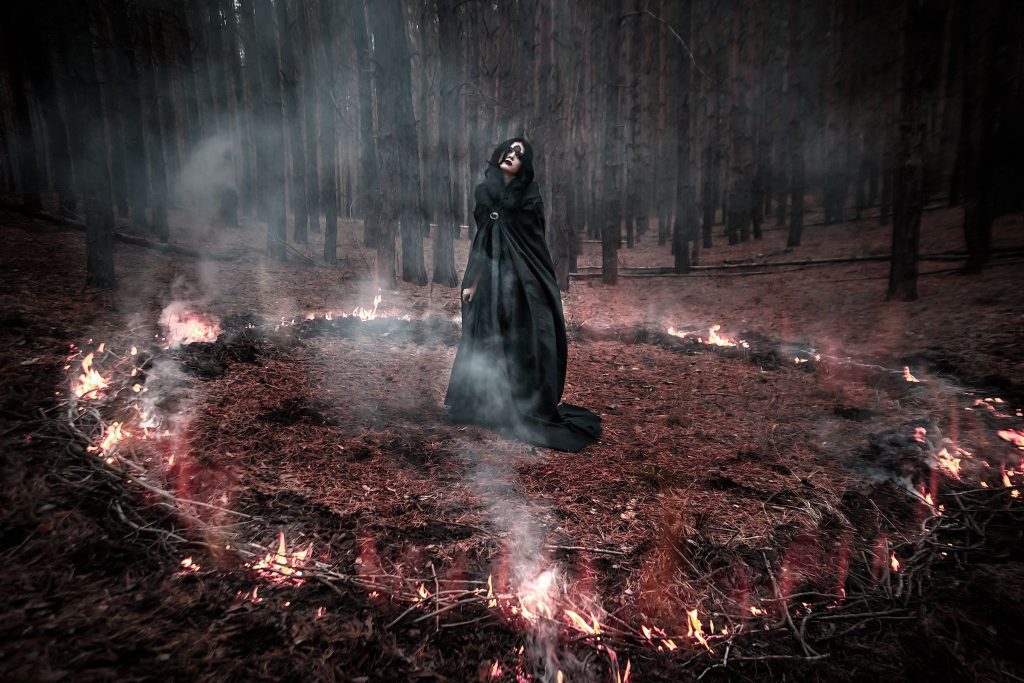

Risks Associated With Engaging in Dark Rituals
Engaging in dark rituals carries significant potential dangers and risks, both on a psychological and spiritual level. Here are some of the potential dangers and risks associated with such practices:
- Spiritual Consequences: Dark rituals often involve the invocation or manipulation of powerful supernatural forces or entities. If not performed with proper knowledge, respect, and understanding, practitioners may inadvertently attract negative energies, malevolent entities, or spiritual attachments. These can lead to spiritual disturbances, psychic attacks, or a loss of personal spiritual balance.
- Psychological Impact: Engaging in dark rituals can have profound psychological effects on individuals. The intense focus on darkness, manipulation, or harmful intentions can result in a distorted perception of reality, increased feelings of fear, guilt, or paranoia, and a loss of empathy or ethical grounding. The psychological toll of engaging in rituals that involve harm or manipulation of others can be significant and contribute to emotional and mental distress.
- Ethical Considerations: Many dark rituals involve actions that infringe upon the free will and well-being of others. Engaging in such practices raises ethical concerns and can result in negative karmic consequences. The intentional infliction of harm, manipulation, or control over others can have far-reaching effects on relationships, personal growth, and one’s own spiritual development.
- Lack of Control: Dark rituals often involve invoking or channeling powerful energies or entities. Without proper understanding, training, or safeguards, practitioners may find themselves unable to control or contain the energies they have invoked. This lack of control can lead to unintended consequences, such as being overwhelmed by negative energies, spiritual possession, or loss of personal agency.
- Legal and Social Consequences: Some dark rituals involve illegal activities, such as animal or human sacrifice, physical harm, or other forms of criminal behavior. Engaging in such practices can result in serious legal consequences and social repercussions. It is essential to be aware of and respect the laws and ethical norms of society when considering any ritualistic practices.
- Personal Well-being: Engaging in dark rituals can take a toll on one’s overall well-being. The preoccupation with darkness, manipulation, or harmful intentions can contribute to a negative mindset, increased stress, and a loss of connection with positive aspects of life. It is important to prioritize one’s mental, emotional, and physical health and consider the potential long-term effects of engaging in dark practices.
It is crucial to approach any ritual or spiritual practice with caution, respect, and a deep understanding of the potential risks and consequences involved. It is advisable to seek guidance from experienced practitioners, spiritual mentors, or qualified professionals before engaging in any ritualistic practices, especially those associated with darkness or manipulation.
Separating Fact from Fiction
It’s crucial to distinguish between fictional depictions of dark rituals and real-world practices. While many rituals described in literature and movies are products of imagination, some individuals do engage in esoteric practices that bear resemblance to these depictions. These practices can range from modern interpretations of ancient rituals to completely original creations that blend various elements of spirituality, magic, and personal belief.
- Popular Culture and Misconceptions:
Dark rituals have been sensationalized and distorted by popular culture, leading to misconceptions and misunderstandings. Fictional portrayals often exaggerate the power and implications of dark rituals, creating a distorted image that deviates from their historical and cultural contexts. - Ethical Considerations and Personal Responsibility:
It is important to approach the topic of dark rituals with an understanding of the ethical considerations involved. While they may hold a certain allure, one must recognize the potential harm that can arise from manipulating forces beyond our control. Responsible practitioners prioritize ethical boundaries, personal growth, and respect for the well-being of others.
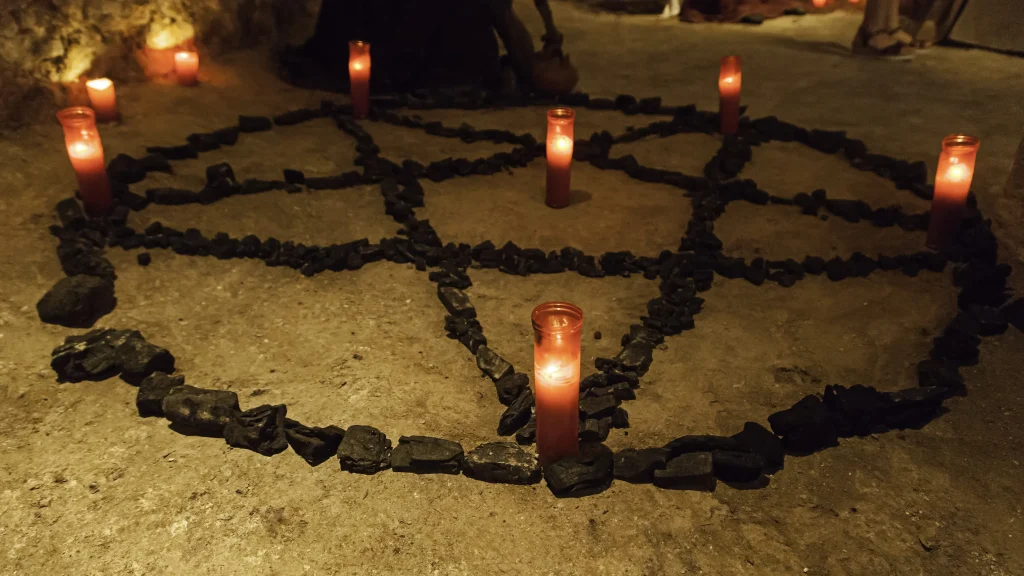

Resources to Learn More About Dark Rituals
Exploring dark rituals and related occult practices requires a responsible and informed approach. While I can provide you with some resources for further learning, it is important to approach them with caution, critical thinking, and a discerning mindset. Here are a few potential resources where you can find information about dark rituals:
- Books on Occultism and Magick:
- “The Book of Black Magic and of Pacts” by Arthur Edward Waite
- “The Satanic Bible” by Anton LaVey
- “The Complete Book of Witchcraft” by Raymond Buckland
- “The Necronomicon” edited by Simon
- Occult and Esoteric Organizations:
Various occult and esoteric organizations have published materials and resources related to dark rituals and occult practices. Examples include:- The Ordo Templi Orientis (O.T.O.)
- The Temple of Set
- The Satanic Temple
- The Temple of Ascending Flame
- Online Communities and Forums:
Online communities and forums dedicated to occultism and magick can provide insights, discussions, and resources related to dark rituals. Some notable online platforms include:- Occult forums (e.g., OccultForum.org, Studio Arcanis)
- Reddit communities (e.g., r/occult, r/satanism)
- Academic Research and Scholarly Articles:
Academic research and scholarly articles can offer insights into the historical, cultural, and sociological aspects of dark rituals. Exploring databases such as JSTOR, Google Scholar, or academic journals focusing on religious studies, anthropology, or occultism can provide access to scholarly works on the subject. - Documentaries and Podcasts:
There are documentaries and podcasts that explore occult practices, rituals, and related topics. Some examples include:- “Dark Net” (TV series)
- “Hail Satan?” (documentary)
- “The Black Tapes Podcast” (audio drama)
It is important to approach these resources with a critical mindset, acknowledging that information about dark rituals can vary in accuracy, bias, and sensationalism. Always prioritize reputable and well-researched sources, cross-reference information, and consider multiple perspectives to gain a well-rounded understanding.
Furthermore, it is essential to emphasize that engaging in dark rituals or occult practices should be approached responsibly and ethically, with a thorough understanding of the potential risks and consequences involved. Seek guidance from experienced practitioners, mentors, or professionals who can provide appropriate guidance and support.
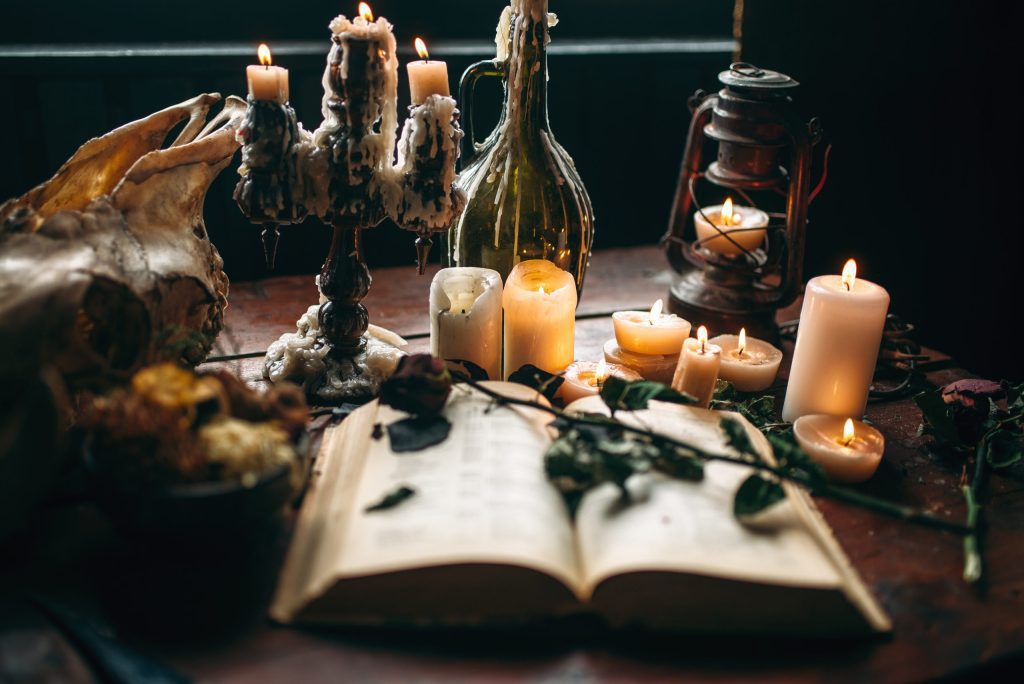

Conclusion
Dark rituals, with their mysterious origins, multifaceted practices, and enigmatic allure, continue to hold a distinct place in human culture. They provide a glimpse into our persistent fascination with the unknown and the extraordinary, reflecting our eternal quest for understanding, power, and connection to the hidden aspects of existence. Whether viewed as elaborate psychological exercises, remnants of ancient traditions, or simply a form of artistic expression, dark rituals remain an intriguing facet of the human experience.

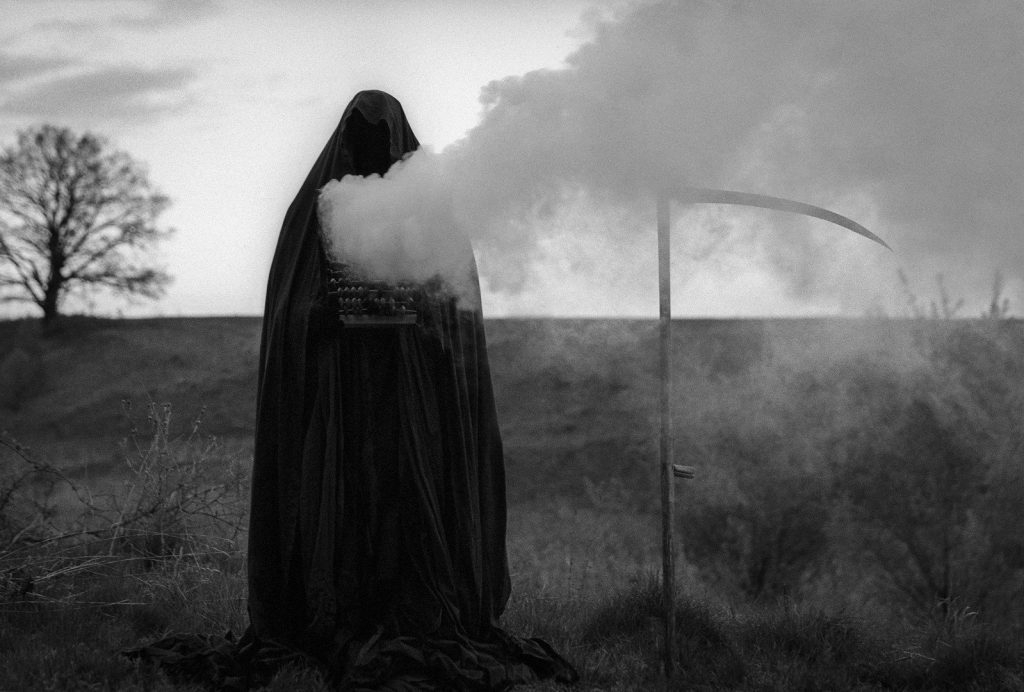
Pingback: The Dark Ritual: Unveiling the Shadows of Forbi...
Pingback: A Comprehensive Guide to Magic Symbols and Their Deep Meanings - Witch symbols
Pingback: Witch Symbols & Meanings | Explore Wiccan & Pagan Magic
Pingback: Witch Symbols & Meanings | Explore Wiccan & Pagan Magic
Superb blog you have here but I was curious about if you knew of any message boards that cover the same topics talked about here? I’d really like to be a part of online community where I can get comments from other knowledgeable people that share the same interest. If you have any recommendations, please let me know. Kudos!